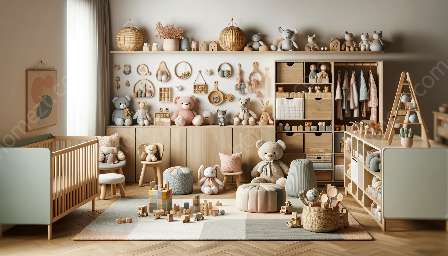If you're looking for toys that help children learn and develop language skills, you've come to the right place. In this comprehensive guide, we will explore the world of language development toys and their importance in the nursery and playroom. We'll also discuss how to select the best toys for early childhood development and provide tips on creating a language-rich environment.
What Are Language Development Toys?
Language development toys are specifically designed to help children develop and improve their language skills. These toys can include a wide range of items, such as books, puzzles, games, and interactive toys that encourage communication and language learning.
The Importance of Early Language Development
Early language development is crucial for children as it lays the foundation for reading, writing, and social interaction. By providing children with the right language development toys, parents and educators can support the growth of essential communication skills, vocabulary, and linguistic abilities.
Toy Selection for Language Development
When selecting toys for language development, it's important to consider the age and developmental stage of the child. For infants, toys with high contrast patterns, textures, and simple shapes can stimulate visual and cognitive development, laying the groundwork for language acquisition. For toddlers and older children, interactive toys that promote storytelling, role-playing, and conversations can enhance language skills and foster creativity.
Key Features to Look For
- Interactive elements: Choose toys that encourage interaction and communication, such as puppets, talking dolls, or speech recognition toys.
- Multi-sensory experiences: Opt for toys that engage multiple senses, such as touch, sight, and sound, to facilitate holistic language learning.
- Storytelling and language games: Select toys that allow children to create and tell stories, play word games, or engage in imaginative play that promotes language skills.
Creating a Language-Rich Environment
In addition to selecting the right toys, creating a language-rich environment in nurseries and playrooms is essential for supporting language development. This can be achieved by:
- Displaying books and storytelling props
- Providing opportunities for conversation and dialogue
- Introducing music and songs to encourage language rhythm and rhyme
Enhancing Playrooms and Nurseries
When outfitting playrooms and nurseries with language development toys, consider the layout and organization of the space. Designate specific areas for reading, storytelling, and interactive play, and ensure that toys are easily accessible and organized to foster independent exploration and learning.
Including Language Development Toys in Toy Selection
As part of the overall toy selection process, incorporating language development toys into playrooms and nurseries can have a profound impact on children's cognitive and linguistic development. By integrating diverse language toys that cater to different age groups and interests, children can benefit from a well-rounded language learning experience.
Conclusion
Language development toys play a vital role in fostering early communication skills and language acquisition in children. By understanding the importance of language development, selecting the right toys, and creating a language-rich environment, parents and educators can contribute to the holistic development of children in nurseries and playrooms.


